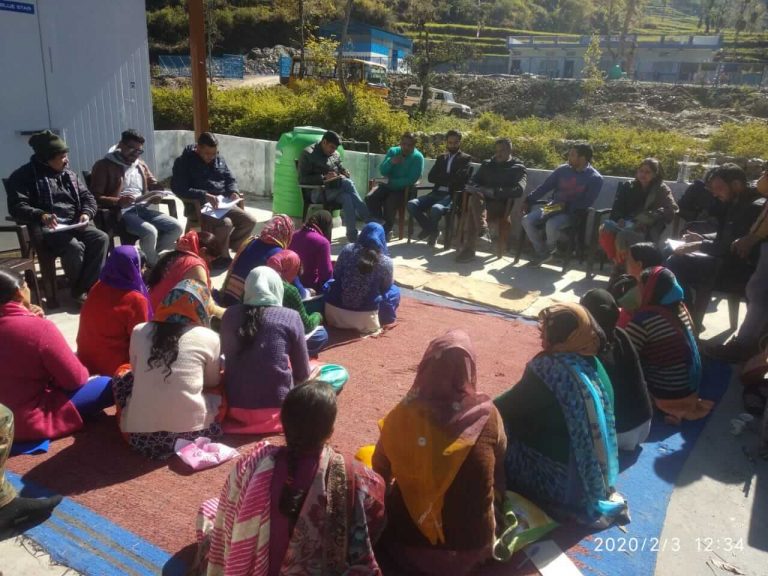How We Started
Let’s start at the very beginning
The journey of Hemp Foundation began among the snowy mountains of Uttarakhand. It was in 2019 when Vishal Vivek – the founder of Hemp Foundation – and a few of his close friends set out on a trek through the remote hilly trails. They were awestruck by the snowy peaks and lush green valleys that surrounded them.
But they also saw the poverty faced by local families. Many villagers were struggling to make ends meet, and migration to the plains was common. The men had left their homes in search of better opportunities in Delhi, Mumbai and even the south.
During his trek, Vishal came upon wild hemp plants that grew even in the most barren patches of land. The hardy shrub was flourishing where little else could survive. He knew that industrial hemp farming had become legal in Uttarakhand the year before and there was an enormous opportunity for sustainable cultivation.
This sparked a question in his mind. What could make Uttarakhand the hemp farm of the world? For Vishal, the answer was threefold:
- Make the farmers of Uttarakhand aware of the green gold growing on their land
- Encourage the farmers to cooperate and develop cluster farms
- Make the womenfolk of these farming villages stakeholders in the economic growth
With that vision, the Hemp Foundation was born in 2019.

And then began the struggle
Vishal and his core team had not realized that the farming community of Uttarakhand had lost heart.
Farming was the only skill they had, and they’d grown disenchanted with it.
Every farmer had either left their village to work as a labourer in the plains or was on the verge of doing so.
And this dejection was not without reason.
- The hilly terrain made farming difficult and led to low agricultural yields and meagre incomes.
- Most farmers owned less than a hectare of land, which was barely sufficient for them to farm viably.
- Even though hemp farming was allowed in 2018, there was a mark on its reputation. The farmers were used to hearing that hemp was the same as marijuana (which is absolutely untrue).
So, Vishal knew that a farmer would return to their village, to their farmland, only if they were guaranteed a fair income and a decent lifestyle.
So, everyone at Hemp Foundation had one goal
Talk to farmers.
Show them the treasure hidden in their backyards.
Tell them how to farm hemp viably and sustainably.
Encourage them to form clusters rather than farm on small pockets of land.
Get the women involved in the process.
Make them a part of a supply chain.
Help them earn a livelihood they could happily thrive on.
This has been and continues to be the most exhilarating journey of our lives.
We began by teaching farmers about the advantages of growing hemp. The Hemp Foundation organized training sessions on eco-friendly farming methods. This allowed hemp to grow on land once thought unsuitable for farming. The change was amazing and empty fields turned green with hemp, bringing both economic benefits and healthier soil.
Women were central to this effort at transformation. Through self-help groups (SHGs), they learned to grow hemp and work in related industries. Hemp can be used to make biodegradable plastics, paper, rope, textiles, and clothing.
For many women, this was their first chance to earn a livelihood. This small step toward financial independence increased their confidence and they achieved far more than they ever imagined.
Our work went beyond teaching farming methods to farmers. We encouraged small farmers to pool their efforts and work as a group. This made farming more efficient and boosted their income.
We also connected farmers with better markets, ensuring they got the best prices for their crops.
The labor was worth the rewards
The impact of hemp can be readily seen in the communities we work with. Farmers now earn more because of better harvests and fair prices.
Women, who once worked only as homemakers or laborers, are now earning regular incomes. This new prosperity has raised their standing in the community.
Villages that used to be quiet are now full of activity.
The environment has also improved. Hemp helps restore soil health and prevents erosion. Its deep roots strengthen the soil. Additionally, hemp crops can capture carbon faster than most forests. It absorbs large amounts of carbon dioxide and helps fight climate change.
We’ve only just begun
Our journey is far from over, and we won’t stop here. Hemp has incredible potential, and this is just the start.
Looking ahead, we are focusing on three main goals: sustainability, innovation, and empowering communities.
At Hemp Foundation we aim to introduce hemp-based alternatives and replace traditional materials in various industries. From bioplastics to clothing and apparel, the scope is vast. Research and development will play a key role in adoption of hemp-based products and we are at the forefront of developing new applications for hemp.
We also plan to reach more rural communities across India and hope our model of sustainable farming will inspire everyone.
The Hemp Foundation’s story shows what is possible when people work together for a common goal. By choosing hemp products, you become part of a movement for a sustainable future.
Let’s use hemp’s power to build a better tomorrow—together.